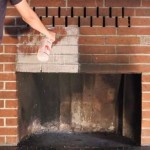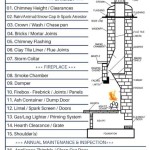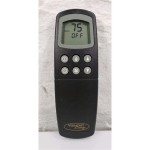Wood Burning Stoves and Fireplace Inserts: A Comprehensive Guide
Wood burning stoves and fireplace inserts have become increasingly popular heating solutions for homes, providing warmth, aesthetic appeal, and a degree of energy independence. These appliances offer an alternative or supplemental heating source, especially attractive in areas with readily available wood resources or in situations where energy costs are a concern. Understanding the nuances of wood burning stoves and fireplace inserts, including their functionality, benefits, drawbacks, and selection criteria, is crucial for making an informed decision.
A wood burning stove is a self-contained heating appliance designed to burn wood fuel in a controlled environment. Typically constructed of cast iron or steel, these stoves radiate heat directly into the surrounding space. Fireplace inserts, on the other hand, are designed to fit into an existing masonry fireplace opening. They essentially transform an often inefficient open fireplace into a more effective heat source by providing a sealed combustion chamber and improved airflow.
Both wood burning stoves and fireplace inserts share the fundamental principles of wood combustion to generate heat. The process involves the ignition of wood, followed by the release of volatile gases and the subsequent burning of these gases along with the remaining char. Efficient combustion is essential for maximizing heat output, minimizing emissions, and reducing creosote buildup, which can pose a fire hazard.
Key Point 1: Efficiency and Heat Output
One of the primary advantages of wood burning stoves and fireplace inserts over traditional open fireplaces is their significantly higher efficiency. Open fireplaces typically lose a substantial amount of heat up the chimney, resulting in low heating efficiency. Wood burning stoves and inserts, however, are designed to contain and direct the heat into the room, increasing overall efficiency. Many modern models boast efficiency ratings of 70% or higher, meaning that a greater proportion of the wood's energy is converted into usable heat.
The heat output of a wood burning stove or fireplace insert is measured in British Thermal Units (BTUs). The appropriate BTU rating depends on the size of the area to be heated, the climate, and the insulation levels of the home. Choosing a stove or insert with the correct BTU rating is vital for achieving optimal heating performance. An undersized unit will struggle to heat the space adequately, while an oversized unit may lead to overheating and inefficient operation.
Factors influencing efficiency include the stove or insert's design, the quality of the wood fuel, and the operating practices of the user. Properly seasoned wood, with a moisture content below 20%, burns more efficiently and produces less smoke. Regular maintenance, such as chimney cleaning and inspection, is also crucial for maintaining optimal performance and preventing potential hazards.
Furthermore, some stoves and inserts incorporate advanced combustion technologies, such as catalytic combustors or non-catalytic secondary combustion systems, to further improve efficiency and reduce emissions. These technologies help to burn off the unburned gases and particulate matter that would otherwise escape into the atmosphere, contributing to cleaner air and greater fuel efficiency.
Key Point 2: Environmental Impact and Emissions
The environmental impact of wood burning stoves and fireplace inserts is a complex issue. Wood combustion inherently produces emissions, including particulate matter (PM), carbon monoxide (CO), and nitrogen oxides (NOx). These pollutants can contribute to air pollution and pose health risks, particularly in areas with high concentrations of wood burning appliances.
However, advancements in stove and insert technology have significantly reduced emissions. The Environmental Protection Agency (EPA) has established emission standards for wood burning appliances, and manufacturers are required to certify that their products meet these standards. EPA-certified stoves and inserts are designed to burn more cleanly and efficiently, resulting in lower emissions compared to older, non-certified models.
The choice of wood fuel also plays a significant role in emissions. Burning dry, seasoned wood produces less smoke and fewer emissions compared to burning wet or unseasoned wood. Additionally, choosing sustainably harvested wood can help to minimize the environmental impact of wood burning. Sustainable forestry practices ensure that forests are managed responsibly, maintaining biodiversity and preventing deforestation.
Proper operation and maintenance are also essential for minimizing emissions. Overloading the stove or insert can lead to incomplete combustion and increased emissions. Regularly cleaning the chimney and ensuring proper airflow are crucial for maintaining efficient combustion and reducing smoke. Some areas may also have regulations regarding wood burning, such as burn bans during periods of high air pollution. Adhering to these regulations is important for protecting air quality and public health.
Key Point 3: Safety Considerations and Installation
Safety is paramount when it comes to wood burning stoves and fireplace inserts. Improper installation or operation can lead to fire hazards, carbon monoxide poisoning, and other dangers. It is crucial to follow all manufacturer's instructions and local building codes during installation.
Professional installation is highly recommended, especially for fireplace inserts. A qualified installer can ensure that the appliance is properly connected to the chimney, that clearances to combustible materials are adequate, and that the venting system is functioning correctly. Improper installation can result in chimney fires, structural damage, and potential health risks.
Carbon monoxide (CO) is a colorless, odorless gas that can be produced by incomplete combustion. It is essential to install carbon monoxide detectors in the home, especially near sleeping areas, to warn of dangerous CO levels. Regular inspection and maintenance of the stove, insert, and chimney are crucial for preventing CO leaks.
Chimney maintenance is particularly important for preventing chimney fires. Creosote, a flammable byproduct of wood combustion, can accumulate in the chimney and pose a significant fire hazard. Regular chimney cleaning by a qualified professional is necessary to remove creosote buildup and ensure safe operation. The frequency of chimney cleaning depends on the type of wood burned, the usage of the appliance, and the design of the chimney.
Furthermore, it is essential to store wood fuel safely, away from the stove or insert, and to keep flammable materials clear of the appliance. A fire extinguisher should be readily available in case of emergency. Educating all household members about the safe operation and maintenance of the wood burning appliance is crucial for preventing accidents and ensuring a safe heating experience.
Choosing the right type of stove or insert depends on individual needs and preferences. Factors to consider include the size and layout of the home, the availability of wood fuel, the desired level of heating efficiency, and the aesthetic appeal of the appliance. Consulting with experienced professionals can help to navigate the available options and select the most suitable stove or insert for a particular application.
Understanding building codes and regulations related to wood burning appliances is also essential before making a purchase. Local authorities may have specific requirements regarding installation, emissions, and chimney clearances. Ensuring compliance with these regulations is crucial for avoiding potential fines or legal issues.
Ultimately, wood burning stoves and fireplace inserts can provide a valuable heating solution for homeowners seeking energy independence, warmth, and a traditional aesthetic. By carefully considering the factors discussed above and prioritizing safety, users can enjoy the benefits of wood burning while minimizing potential risks.

Wood Burning Fireplace Inserts 1 Stove Insert Dealer

Lopi Premium Wood Fireplace Inserts Custom Hearth Fireplaces And Stoves

Wood Burning Fireplace Inserts Insert Installation

Ventis Hei240 Wood Burning Insert

Why A Wood Burning Fireplace Insert Bethesda Md Service

T25i Timberwolf Wood Fireplace Insert Hearth Stove Patio

Summertime Deals On Fireplaces Stoves Inserts And Linear

Osburn 3500 Wood Burning Fireplace Insert 31 Ob03510 Hvacdirect Com

Pellet Fireplace Inserts Heart Line Stove Jaffrey Nh

Rais 60 Insert Wood Fireplace For
Related Posts








